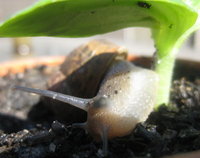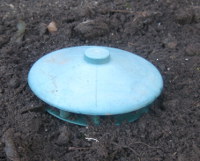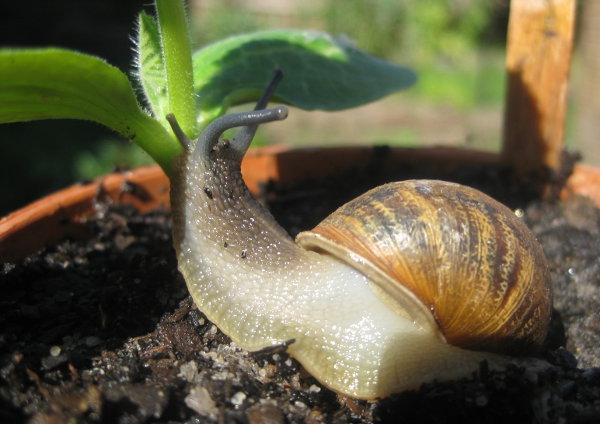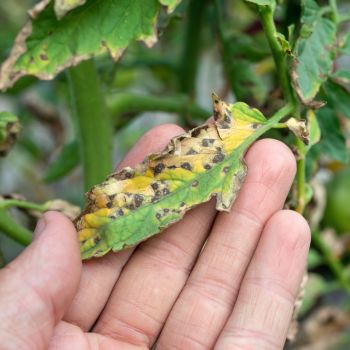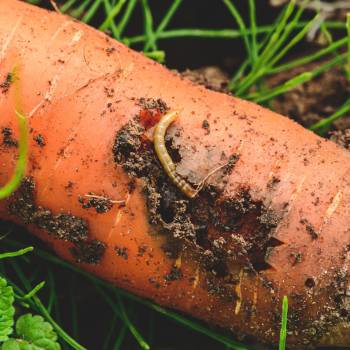Hi again. Last time I wrote about some of the jobs you need to get done at this time of year, and some of the flowers and vegetables to start growing. Today I need to warn you about the most voracious pests that you have to deal with, and this time of year is when they are at their worst.
These pests are, as you might guess, slugs and snails. With spring rains and warmth providing perfect conditions for eating and breeding, you need to get on top of them now before they start laying their eggs. You don’t want the shock of coming out one morning and seeing all your little seedlings decimated, and believe me, you would not believe the amount of damage only one snail can do. If you are not careful you can lose every seedling in a batch.
There are a number of ways to deal with them. Some people use poisonous bait but that can lead to poisoning of snail eating wildlife like blue-tongue lizards and birds, and these pellets are usually poisonous to pets as well. I really try to limit the amount of poisons I introduce to my garden so these sorts of baits are out for me. Other people go out at night by torchlight and stomp on them which can, I admit, give a sense of satisfaction but it is not a favourite of mine. I like my sleep too much.
The two methods I prefer are to get rid of their habitats, and I also use traps among my vegetable beds.
- Habitat: Snails like to sleep during the day in and behind rubbish like old pots and timber. If you get rid of this rubbish lying about your yard you leave them vulnerable to predators and they don’t build up high numbers. I also find that many snails like to sleep in the crevices of tree trunks so check that out.
- Traps: I buy specially made plastic slug and snail traps from my garden centre but you can easily make your own cheaply from saucers or cut down plastic drink bottles. They need to be at least 3 cm deep and dug into the soil next to your vegetables so the rim is close to the soil surface, then half fill them with either beer, or a sugar and yeast solution. The snails and slug are attracted to the liquid, crawl in and drown.
Another trap you can make is to just lay a few plant pots around, keeping one edge propped up a little off the ground. The snails will crawl into them for the day which makes it easy to collect them for disposal. Slugs can be caught by leaving a bit of damp board out at night. They crawl under it during the night.
Other methods that work are ducks, spreading crushed eggshells or diatomaceous earth around your most valuable plants or using garlic spray. Whatever you use depends on your own circumstances. I personally hate killing anything myself so I prefer nature to do it for me and that is why I like to try and attract as many predators to my garden as I can. I have found ducks to be a great way to keep these pests under control but many people can’t or don’t want to keep them in their gardens and have to rely on other methods.
If you really can’t bear to kill anything in your garden you can use copper wire or strips around your valuable plants as a barrier. Snails and slugs hate to cross it.
One thing to keep in mind is that there are many native snails and slugs that do no damage to garden plants. When you are looking to see if a snail or slug is the damaging, introduced type you just need to remember that native slugs and snails have two antenna and introduced ones have four.
Remember, you will always lose a few seedlings to these pests but the more you do to keep their numbers under control, the easier it is to live with the damage they cause.


